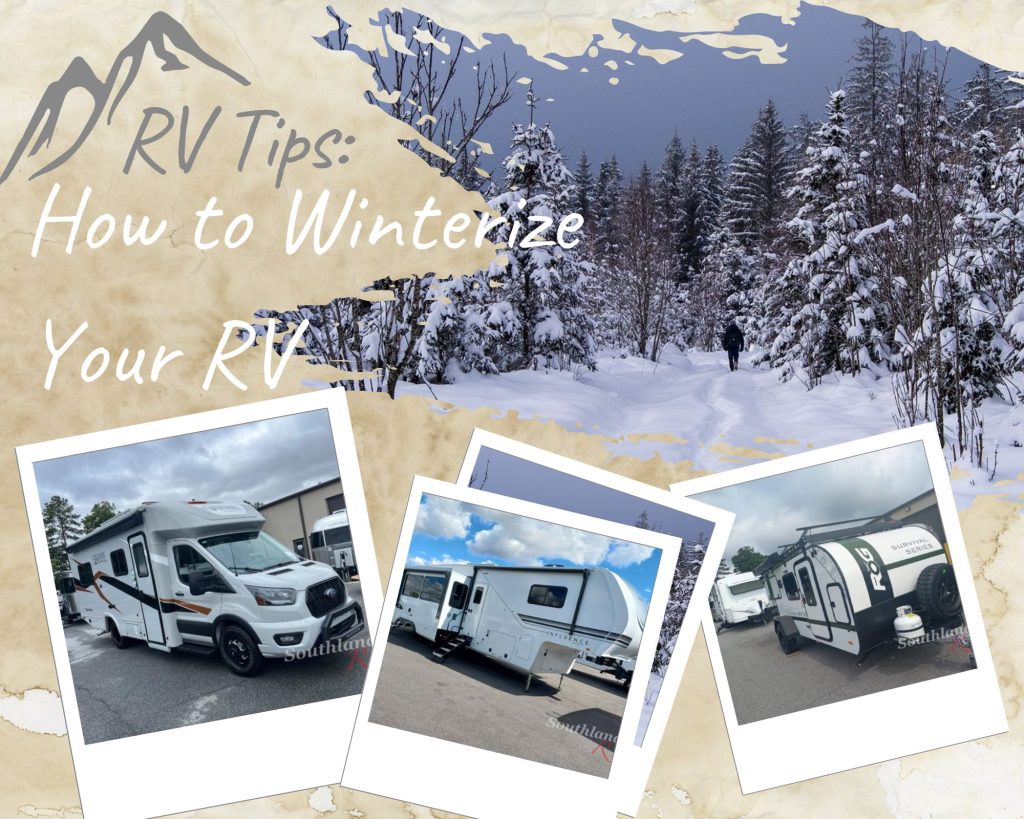As winter approaches, it’s time to prepare your new or used RV for the colder months ahead. Whether you plan to hit the road or park it for the season, proper winterization is crucial to protect your vehicle from freezing temperatures and potential damage. With just a little time and effort, you can ensure your RV stays in excellent condition until spring. Here are some essential winterization tips to get you started.

1. Drain and Bypass the Water System
One of the most critical steps in winterizing your RV is draining the water system to prevent freezing and cracking. Begin by emptying the fresh water tank, and don’t forget to drain the water heater, as it can hold a significant amount of water. Next, open all the faucets and flush the toilets to remove any residual water from the pipes. To protect your plumbing, consider installing a bypass kit for your water heater, allowing you to fill your system with antifreeze without wasting water.
2. Use RV Antifreeze
After draining the water system, it’s time to add RV-specific antifreeze to protect your plumbing from freezing. Pour the antifreeze into the fresh water tank and run the pump until you see the pink fluid coming out of every faucet and toilet. This step ensures that all the pipes and fixtures are adequately protected. It’s important to use antifreeze specifically designed for RVs, as regular automotive antifreeze can be toxic.
3. Protect Your Exterior
The exterior of your RV needs some TLC before winter hits. Start by giving your RV a thorough wash and wax to protect the paint from harsh winter elements. Check for any cracks or gaps in the seals and caulk where necessary to prevent leaks. The tiniest cracks can cause enormous and costly damage. If you live in an area with heavy snowfall, consider investing in an RV cover to shield your vehicle from ice, snow, and UV rays. This extra layer of protection will keep your RV looking great and prolong its lifespan.
4. Maintain the Battery
Batteries can struggle in cold temperatures, so it’s essential to give yours some attention before winter. If you’re storing your RV, disconnect the battery and store it in a cool, dry place to prevent it from freezing. For those who leave their RV plugged in, ensure the battery is fully charged and consider using a battery maintainer to keep it topped off throughout the winter months.
5. Check Your Tires
Before storing your RV, inspect your tires for proper inflation and wear. Under-inflated tires can become damaged in cold temperatures, so inflate them to the recommended pressure. If you plan to store your RV for an extended period, consider using tire covers to protect them from UV rays and the cold.
By following these winterization tips, you can keep your RV safe and ready for your next adventure when the weather warms up. Taking the time to winterize properly will save you from costly repairs and ensure your RV is in peak condition when you hit the road again.
If you have any questions about winterizing your RV or need additional tips, contact us today. Our RV service department can help with winterization too, so reach out today!
